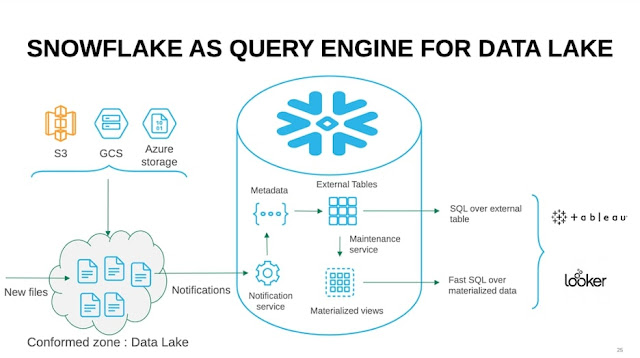The Working of the Snowflake Data Lake
A data lake is a storage repository that is highly scalable and flexible and holds massive volumes of data. Further, data lakes can hold data in its native format, whether unstructured, semi-structured, or structured. Thus, organizations that need to store huge volumes of data in any form prefer data lakes.
Snowflake, a fully secured
and high-performing platform, has all the attributes of both a data warehouse
and a data lake, and hence, businesses prefer the Snowflake data lake as
their main data storage system. The Snowflake data warehouse function can be
used for storing data in AWS S3, Microsoft Azure, or Google Cloud Storage and make
data analytics and data transformation faster.
There are several benefits
of the Snowflake Data Lake.
It can hold data in any
format along with structured data such as CSV, Parquet, JSON, and tables. It
has high computing powers and the performance of the Data Lake is not impacted
even when multiple users simultaneously execute multiple queries.
A very important benefit of
the Snowflake Data Lake is that it is available as a fully-managed
service and offers critical services like data performance tuning, data
protection, and high data security. All these are to be expected from an
optimized cloud-based platform like the Snowflake Data Lake.
Finally, this Data
Lake provides an unlimited data storage repository at very cost-effective
rates. Users have to pay the base price for storage as charged by cloud
providers Google Cloud Platform, Microsoft Azure, and AWS S3
after which they can scale up or down by paying only for the quantum of
resources used.
These are some benefits of the Snowflake data
lake.




Comments
Post a Comment